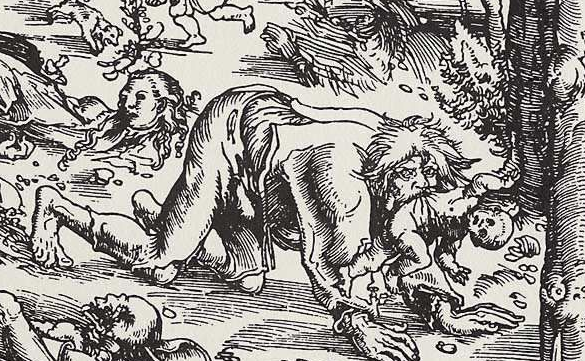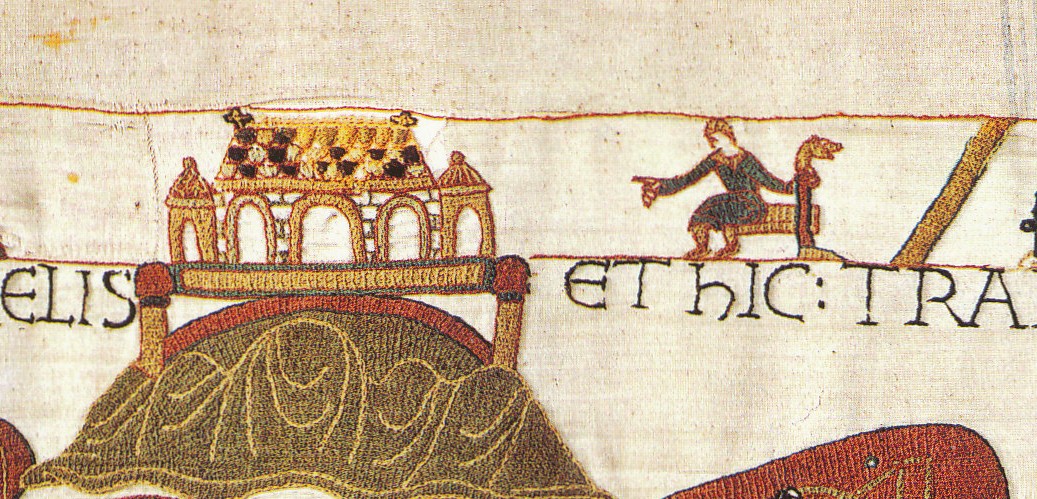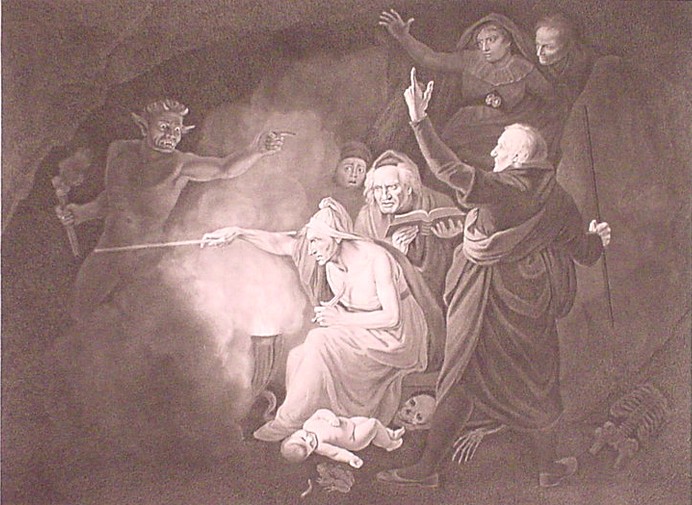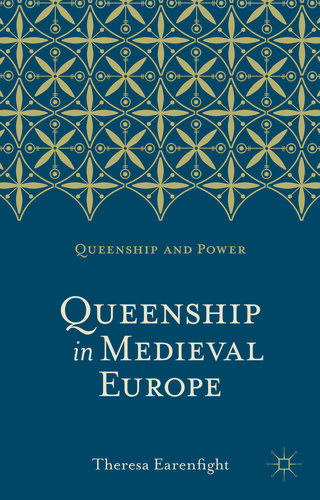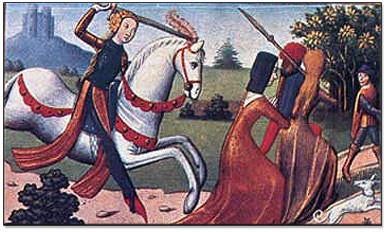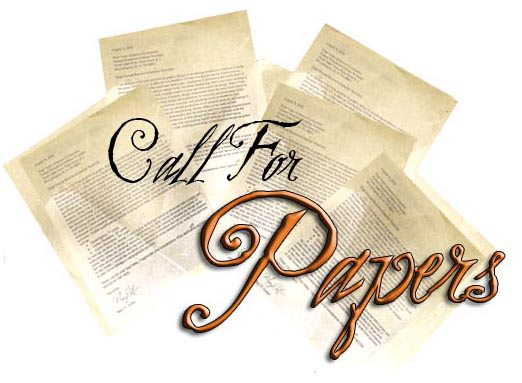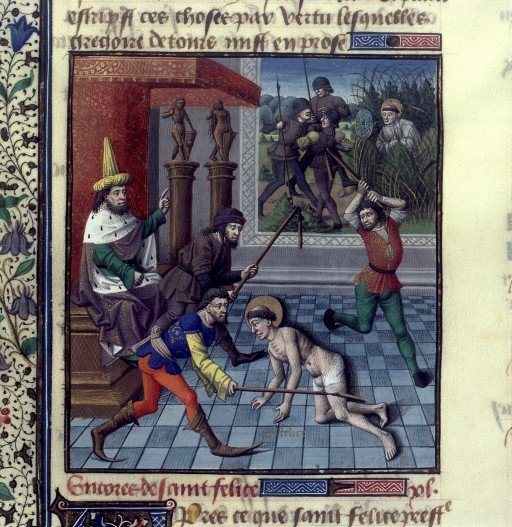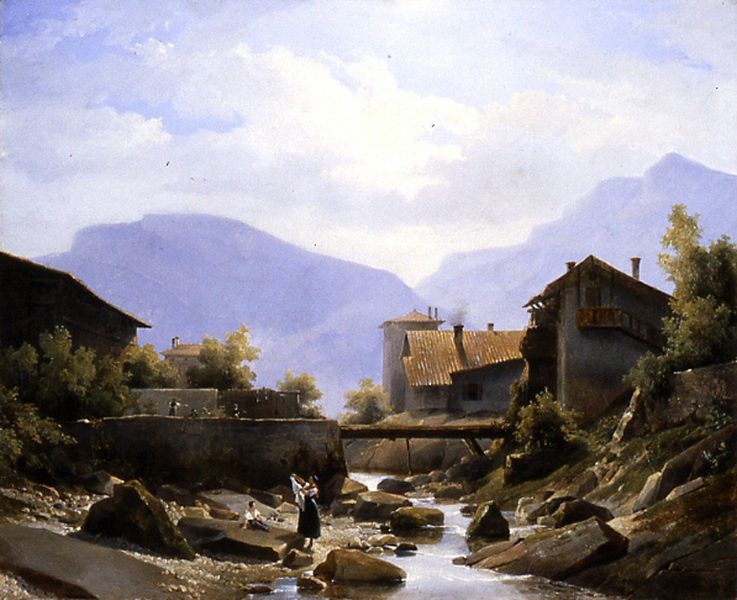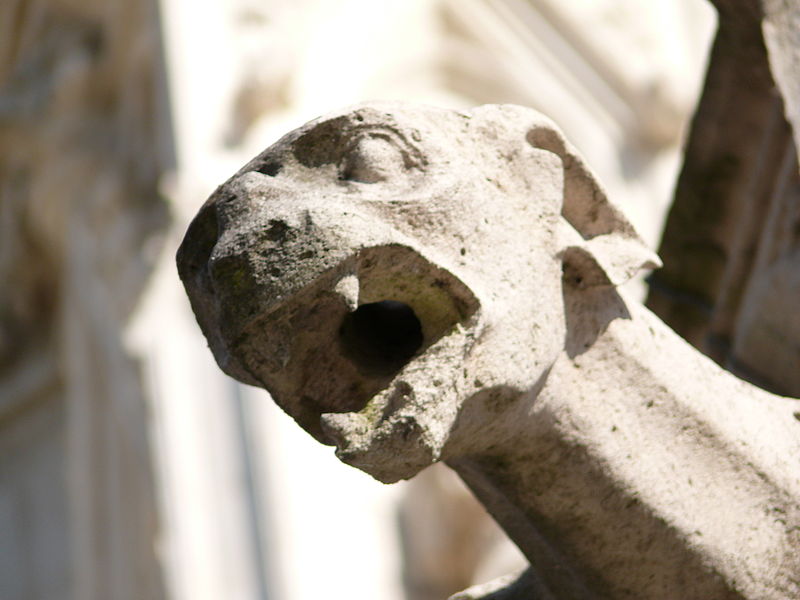The Role of Woman in Medieval Sweden on the Evidence of the Earliest Legal Texts
Legal texts are aimed at maintaining order and defining what is legal in a given society. In the Middle Ages they often take the form of descriptions of situations and cases representing the conditions for the application of various rules.
Werewolves and the Dog-headed Saint in the Middle Ages
Stories of werewolves and their canine kin have been around for centuries, and some of them may be a bit surprising.
Designer of the Bayeux Tapestry identified
The Bayeux Tapestry was designed by Scolland, Abbot of St.Augustine’s monastery in Canterbury, according to research by Howard Clarke of University College, Dublin.
Sorcery at court and manor: Margery Jourdemayne, the witch of Eye next Westminster
One of the most sensational episodes of the mid-fifteenth century was the trial for treasonable witchcraft of Eleanor, duchess of Gloucester. As the wife of a royal duke, Humphrey of Gloucester, uncle to the young Henry VI, she not only moved in the highest circles but, since the king was still unmarried, was also amongst the first ladies in the land.
Queenship in Medieval Europe, by Theresa Earenfight
Read an excerpt from Queenship in Medieval Europe and save 20% when you order it with these special promotional codes!
Charisma and Routine: Shaping the Memory of Brother Richard and Joan of Arc
Charisma and Routine: Shaping the Memory of Brother Richard and Joan of Arc Andrew Brown (School of Humanities, Massey University, New Zealand) Religions, 2012, 3(4), 1162-1179…
Call for Papers: Medieval Secrets and Mysteries
Conference at the University of Victoria, February 28 ‐ March 1, 2014
Mine, mine, mine! Marking Medieval Manuscripts, Then and Now
Why are there modern ink stamps on medieval manuscripts?
Robin Fleming awarded MacArthur Fellowship
Robin Fleming, one of America’s leading early medieval historians, has been awarded a MacArthur Fellowship, the so-called ‘Genius Grant’.
The King’s Table: A Semiotic Analysis of a Medieval Noble Banquet
During the Middle Ages, aristocratic banquets were common and often grandiose affairs. The function of a banquet went beyond mere celebration of an event or holiday and became a tool for demonstrating a person’s wealth, influence, piety, and generosity.
Bede on the Life of St. Felix
If the eighth-century Anglo-Saxon writer Bede had the chance to rework a Saint’s life, what changes would he make and how would he make it more relevant for his audience?
What has been found now under a car park? A Viking Þing
Archaeological research has backed up findings that a Viking assembly ground, known as a Þing, is located under a car park in northern Scotland.
Account Rolls of Medieval Savoy: Example of the Castellany of Evian-Féternes in 1299–1300
The medieval principality of Savoy left historians an outstanding legacy: the corpus of account rolls of its castellanies, the base administrative units of medieval Savoy.
Alfonso the Slobberer and Ivar the Boneless: Worst Nicknames for Medieval Rulers
Our top 10 list of worst medieval nicknames
The history of sneezing
Pope Gregory VII enjoined his people to say, ‘may God bless you’ as an equivalent to ‘I hope you may rid yourself of the bacillus’.
Call for Papers: Catastrophes and the Apocalyptic in the Middle Ages and Renaissance
20th Annual Arizona Center of Medieval and Renaissance Studies Conference, being held on February 6-8, 2014 in Scottsdale, Arizona
Interview with Dana Cushing, on De Itinere Navali
The other interesting story is the manuscript’s survival itself – it was nearly destroyed three times in the past two hundred years alone! Who knows how many narrow escapes it had just from war, fire, neglect, ignorance, and so forth before that?
Ricardians gather in York to commemorate England’s Last Plantagenet King
Historians and students of medieval history gathered in York today for a special event in memory of King Richard III, England’s last Plantagenet monarch.
The Cult of the Cross in the Order of the Temple
The military orders were unique religious institutions in very obvious ways, but one characteristic feature that has so far attracted little attention is the fact that of all the regular religious orders and communities that existed during the twelfth and thirteenth centuries only they wore the cross, which was the sign of the crusader, permanently on their habit.
Gargoyles and the Grotesque in Medieval Architecture
Gargoyles in its most technical term refer to waterspouts projecting from the roof of the Cathedrals.
The Medieval Walking Dead
On January 1, 1091, an army of the dead came to Normandy. For one priest, it would be a night that he would never forget.
Galileo, the Impact of the Telescope, and the Birth of Modern Astronomy
Galileo would have dearly loved to explain to his examiners how his observations made belief in the Copernican system more intellectually respectable even though he had no irrefutable proof of the Earth’s motion, but this was an opportunity he never got.
Capital Punishment: The Curious History of its Privileged Place in Christendom
The Death Penalty and war have long been linked as practices that present special problems for any professedly Christian ethic.
Synthesis of Thought and Action: Muslim-Christian Political, Military and Theological Cohesion From the Time of the First Caliphs to the Reign of the Fatimid Empire
Muslim-Christian theological synthesis, beginning in the Umayyad period and culminating in eleventh century Fatimid Egypt, will be explored through the particular lens of Coptic-Christian clerical and lay efforts to appropriate the Arabic cultural language as a means of religious survival and dialogue with Muslim apologists.
If Game of Thrones were a show about a Medieval Theme Park!
The people from Bad Lip Reading have created a very funny (if at times incomprehensible) video from Game of Thrones.

